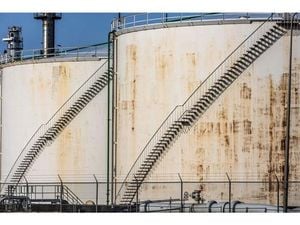The ease with which we can forget about nuclear weapons is astounding, yet the stakes involved with the United States' nuclear arsenal and modernization plan demand our attention. The U.S. is barreling forward with one of its most extensive and pricey nuclear modernization efforts to date. This three-year initiative is set to reach approximately $1.7 trillion, which some observers are beginning to question. What’s driving this massive investment? And more critically, is it really necessary?
For the past several decades, the American nuclear arsenal seemed somewhat stagnant, especially following the Cold War's conclusion. During this period of apparent dormancy, the Pentagon has faced complications, as modernization and expansion plans have struggled with over-budgeting and delays—painting the process with the usual challenges of non-competitive procurement. Experts are now cautioning against what many perceive as overreaction within the U.S. to the nuclear capabilities of other countries.
Flashback to the height of the Cold War, when nuclear capabilities skyrocketed during the arms race, peaking around 1986 with about 70,000 warheads globally. Fast forward to today: worldwide stockpiles have been cut down significantly, with the U.S. retaining roughly 5,748 warheads, closely tailing Russia's arsenal of 5,580. Together, these two nations collectively own over 90% of the world’s nuclear arms. Meanwhile, China is on course to expand its current count of 500 warheads, potentially doubling them by the decade's close.
The continuation of the New Strategic Arms Reduction Treaty (New START)—which currently governs long-range nuclear arms and delivery systems—will dwindle away by early 2026. With the treaty's expiration looming, new additions to the U.S. nuclear arsenal are under consideration. It begs the question: what’s really guiding the U.S. nuclear policy as it moves forward?
The Pentagon’s modernization plan encompasses all three legs of what is known as the nuclear triad. This triad comprises land-based intercontinental ballistic missiles (ICBMs) based out of Western silos, long-range bombers capable of delivering nuclear payloads, and stealthy ballistic missile submarines (SSBNs)—the latter of which can carry close to 1,000 powerful warheads. While this triad was justified amid the Cold War’s hysteria, the determining factor going forward isn’t simply new technology but rather the strategy to effectively minimize costs.
Critics argue whether American nuclear strategy truly requires this excessive spending amid seemingly growing national debt, currently estimated at $26.3 trillion. With economic development at the forefront of national priorities, is there room for alternative strategies? The question remains whether the U.S. could accomplish effective deterrence with more economical methods akin to what China has opted for—streamlining forces to maximize economic benefits.
Potential vulnerabilities arise when discussing the future of ICBMs like the new Sentinel models, stationed near many adversarial threats, leaving them exposed to being targeted. On the flip side, the B-21 Raider long-range bomber is at risk of being taken out before it even has the chance to take off. Both represent forward strides in military capability yet bridge the question of feasibility.
If maintaining deterrence is the end goal, forces need simply to withstand potential attacks and have the capability to strike responding targets. Some experts have suggested constructing approximately 1,000 nuclear warheads distributed among twelve Columbia-class SSBNs—both dependable and effective, at the cost of around $130 billion. This is stacked against the proposed $1.7 trillion for modernizing the complete triad. The massive price tag seems excessive, driving home the deal for critics who feel these funds might be used more constructively elsewhere.
This entire discussion feeds directly back to the changing global security scenario. Critics of U.S. nuclear policy underline the necessity for reform, regardless of the narrative pitched by establishment figures who cite threats from North Korea, Russia, and China as justifications. Notably, there’s growing sentiment among policy experts advocating for the reconsideration of the existing program—suggesting its scale be slashed to fit the current geopolitical climate.
Public opinion concerning nuclear armament has remained stagnant, with citizens largely uninformed about the heavy price tag attached to modernizing these weapons—which surpasses even the complete costs of the iconic Manhattan Project at over $57 billion annually. So, one must wonder: Are the American people fully aware of what these initiatives entail? The evident disconnect between public knowledge and policymaking is troubling, particularly when assessing the urgency of nuclear deterrence strategies as military landscapes shift.
To sum it up, the U.S. is at a crossroads of significant military modernization, especially concerning its nuclear arsenal, which demands careful scrutiny. With the potential for exorbitant costs and policy impasses looming on the horizon, the question of whether to keep increasing nuclear capabilities or pivot toward reduced spending—while still retaining effective deterrence—will shape both national security and the public discourse around nuclear arms for years to come.



